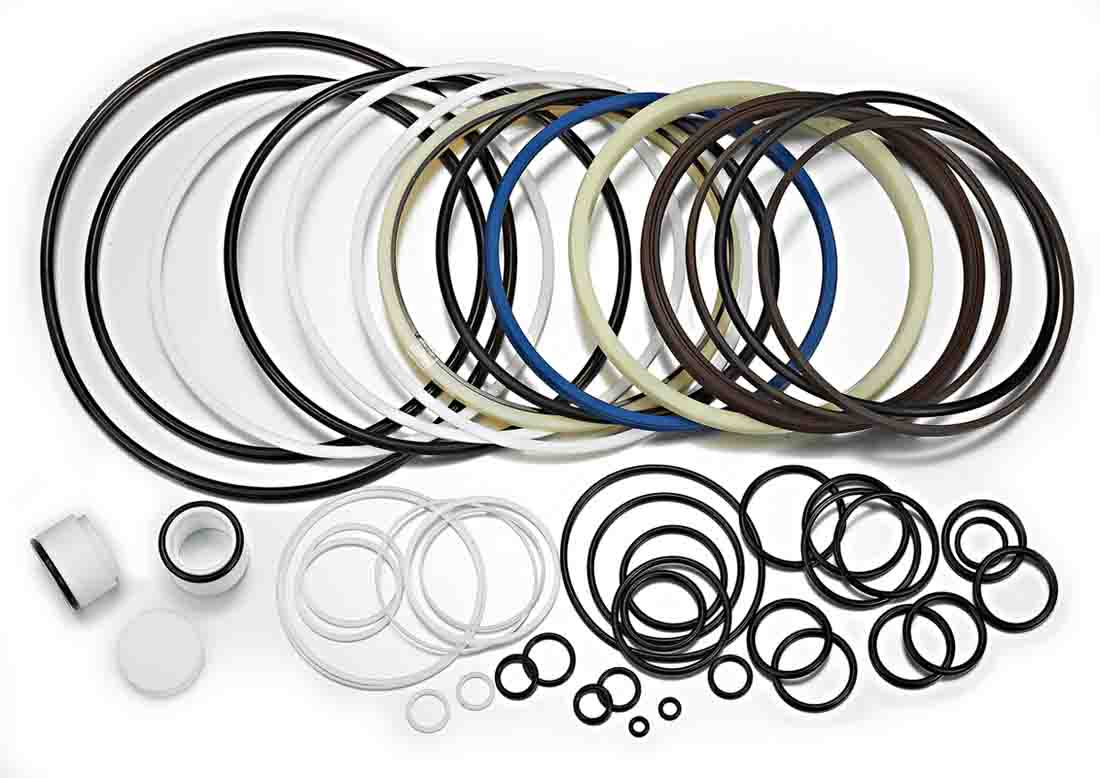1. Preventing Leaks: Piston seals prevent hydraulic fluid from leaking past the piston and out of the cylinder. This ensures that the force generated by the hydraulic fluid is effectively transmitted to the piston and, consequently, to the load being moved or controlled.
2. Maintaining Pressure: Seals help maintain the necessary pressure within the cylinder, ensuring that the hydraulic system performs optimally and with the desired force.
3. Protecting Against Contaminants: Seals act as barriers to prevent contaminants, such as dust, dirt, and debris, from entering the hydraulic cylinder. Contaminants can cause wear and damage to the cylinder components.
4. Reducing Friction: Effective seals minimize friction between the piston and the cylinder wall, which helps in smooth and efficient operation of the hydraulic system.
5. Minimizing Fluid Leakage: Proper sealing helps in retaining the hydraulic fluid within the cylinder, preventing unnecessary loss of fluid and ensuring that the hydraulic system remains at the correct fluid level.
Types of Piston Seals
1. U-Cups (or U-Seals):
- Design: Shaped like the letter “U” with two sealing lips and a central rib.
- Function: Commonly used in various hydraulic applications due to their simplicity and effectiveness in sealing.
- Advantages: Cost-effective and versatile, providing good sealing performance in both static and dynamic applications.
2. O-Rings:
- Design: Circular rings made from elastomeric materials.
- Function: Used in combination with other sealing elements or as primary seals in some designs.
- Advantages: Easy to install and replace, suitable for a range of pressures and temperatures.
3. Piston Rings:
- Design: Metal or composite rings that fit around the piston.
- Function: Provide high-pressure sealing in dynamic applications and are often used in high-pressure cylinders.
- Advantages: Durable and can handle extreme pressures and temperatures.
4. V-Rings:
- Design: Resemble the letter “V” and are typically made from elastomeric materials.
- Function: Used for secondary sealing and dust protection.
- Advantages: Effective at sealing under low-pressure and low-speed conditions, and can accommodate slight misalignments.
5. Wiper Seals (or Scraper Seals):
- Design: Designed to scrape away contaminants from the rod surface before they can enter the cylinder.
- Function: Prevent external dirt and debris from entering the cylinder, protecting the primary seals from damage.
- Advantages: Prolongs the life of the primary seals and maintains hydraulic system performance.
6. Rod Seals:
- Design: Fit around the rod in a similar way to piston seals but are designed to prevent fluid leakage along the rod.
- Function: Ensure that hydraulic fluid does not escape from the cylinder, while also protecting against external contaminants.
- Advantages: Essential for maintaining system integrity and protecting the cylinder from wear and damage.
Materials Used for Piston Seals
- Nitrile Rubber (NBR): Good for a wide range of temperatures and has good oil resistance. Commonly used in many hydraulic applications.
- Fluoroelastomer (Viton): Offers high temperature and chemical resistance, suitable for harsh environments.
- Polyurethane (PU): Provides excellent wear resistance and is often used in high-pressure applications.
- Hydraulic Fluids Compatibility: The choice of material depends on the type of hydraulic fluid used, as well as the operating temperature and pressure.
Maintenance and Troubleshooting
1. Regular Inspection: Check piston seals regularly for signs of wear, damage, or leakage. Look for external signs such as fluid leakage or reduced performance.
2. Proper Lubrication: Ensure that the hydraulic fluid is clean and adequately lubricates the seals. Contaminated or inadequate lubrication can lead to premature wear.
3. Proper Installation: Follow manufacturer guidelines for seal installation. Improper installation can cause seal failure and reduce the system’s effectiveness.
4. Avoid Contaminants: Use wiper seals or other protective measures to keep contaminants away from the seals. Contaminants can cause abrasions and affect seal performance.
5. Temperature Management: Monitor and manage the operating temperature of the hydraulic fluid to prevent thermal degradation of the seals.
6. Seal Replacement: Replace seals at regular intervals or when signs of wear are evident. Failing to replace worn seals can lead to system failures and increased maintenance costs.
Importance in Hydraulic Systems
Piston seals are essential for the efficient operation of hydraulic cylinders. They ensure that hydraulic pressure is maintained, fluid leakage is minimized, and contaminants are kept out. Proper seal selection, installation, and maintenance are critical to the performance and longevity of hydraulic systems. By understanding and managing piston seals effectively, you can ensure reliable and efficient operation of hydraulic machinery and equipment.

